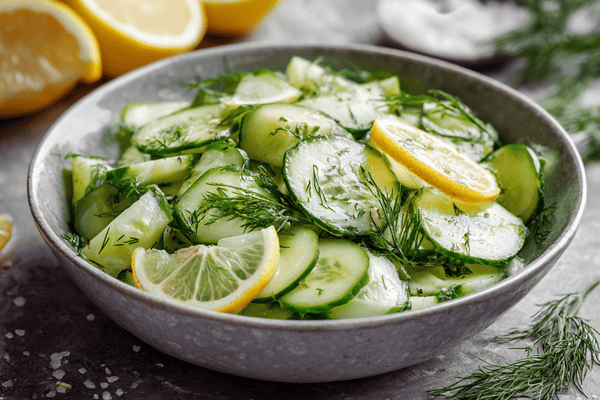
If you purchase a set of high-quality knives that includes serrated knives such as a bread knife or a steak knife, there is one thing you might notice. Your bread knife doesn’t appear to dull and lose its sharp edge as quickly as the other blades, despite the fact that you use it just as often. But why is this?
In a nutshell, knives with a serrated edge do not need sharpening as regularly as smooth-edge blades. When the time comes that you do need to sharpen the serrated blade, however, it’s important to know what you’re doing.
Sharpening a serrated edge is not the same as sharpening other knives, and some people consider it a little more difficult and certainly time-consuming.
But don’t worry, serrated knife sharpening is still something you can do at home with the right tools, and all it takes is a little practice and the right equipment. In this article, we will be outlining the recommended method with tips and advice so that you have everything you need to know.
Table of contents
- Do You Need to Sharpen a Serrated Knife?
- How to Sharpen a Serrated Knife
- How Not to Sharpen a Serrated Knife
- Final Thoughts
Do You Need to Sharpen a Serrated Knife?

One of the best things about the serrated knife is that it will be useable for much longer without needing to be sharpened, and will still perform as well as the day you bought it. In some cases, it might be years before you even need to think about sharpening your serrated knife, but of course, this depends on how often you use it and what you use it for.
The reason for this longevity in sharpness is that a serrated knife is designed differently to a blade with a smooth edge. Serrated knives have several little teeth and it is only the tips of these teeth that make contact with the food. Moreover, instead of slicing, a serrated knife is used more like a saw in a back and forth motion, so even when the serrated points begin to dull, the edge will still be more than efficient where cutting is concerned.
You see, when you are cutting with your serrated knife-edge, the points at which it makes contact with the food apply a much greater amount of pressure, and so this makes cutting more efficient than if you were trying to cut with a dull, straight knife blade. Think about when you are cutting a soft fruit like a tomato; the serrated teeth of your bread knife will grab hold of the skin and cut through with surprising ease.
The length of time that serrated knives can use without being sharpened varies according to how you use them. For most people, these knives serve as nothing more than a bread knife and in this case, you can expect years of performance out of the blade before you’ll need to worry.
That said, serrated bread knives can get dull as well. As hard as some bread crusts may be, serrated knives—and knives in general—get dull through contact with the cutting board, rather than contact with food. As the knife blade hits the cutting board repeatedly, it begins to wear down.
How to Sharpen a Serrated Knife
Let’s take a moment to consider the design of the serrated knife. Along the cutting edge, you will notice that there are lots of little sharp points and serrations. Look even more closely, and you will see that one side of the blade is beveled yet the surface of the other side of the knife is flat. This is similar to many other single-beveled blades.The difference with a serrated knife however is that, when sharpening, you will need to focus on and sharpen the beveled edge of each of the serrations or gullets separately. The flat side of the blade does not need to be sharpened.
Sharpening a serrated knife sounds like a lot of hard work and for this reason, a lot of people decide to take their serrated knives to a specialist who does the work for them. However, it is more than possible to do serrated knife sharpening yourself at home, and there are even specially designed sharpening tools to get the job done.
A serrated knife sharpener is more commonly known as a sharpening rod (ceramic or steel) and it is very similar in design to a honing steel.

Instructions:
1) To begin, select the proper grit size of DMT Serrated Knife Sharpener (available in extra-fine, fine, and coarse). For most knives, the fine grit will provide a good cutting edge and will sharpen at a good rate.
The coarse grit is optional for a faster sharpening rate on very dull serrated knives.
The extra-fine and ceramic grits will provide a polished edge.
2) Match the diameter of the cone on the DMT Serrated Knife Sharpener to the size
Note: The serrated knife sharpener is tapered to match wide and narrow serrations.
3) With the sharpener in one hand and the knife in the other, use a few short, light, back and forth strokes to sharpen the beveled edge of each individual serration. Keep the sharpener perpendicular to the beveled edge. After a few strokes, feel for a burr.
Typically speaking, you will need to make around four to five strokes on each of the serrations, but this depends on how dull the blade has become. If you need to do more to make it sharp, then please do so.
There is something of a knack for using this tool but it’s certainly not something that you won’t pick up with a little bit of practice. One tip is to take the sharpening rod and fit it to the beveled edge of each serration or gullet, before slowly dragging the rod across them in strokes.
Do make sure that as you move the rod, you keep it as straight as possible to ensure that the angle remains flush with the bevel. Also, keep in mind that it is a far safer method to move the rod away from the blade as you are sharpening and this will help to better avoid cuts and accidents.
This is something of a time-consuming process but using sharpening rods isn’t overly difficult as long as you keep the angle right. Also, remember to turn the knife over and use a normal sharpening stone on the flat side of the blade to counter any burrs you created and to attain a truly sharp edge.
When you’re happy the edge is truly sharp, wash the surface of the blade and dry it off thoroughly before popping it back into its storage, until you’re ready to use it again.
How Not to Sharpen a Serrated Knife

Many people are tempted to use an electric knife sharpener or a knife sharpening machine for their serrated knives. Now, some come with a special slot for serrated knives and if this is the case then you could sharpen it in this way and it is perfectly fine to use this feature.
However, if your electric knife sharpener or sharpening machine is cheap or doesn’t have one of these slots, then you should avoid using it for your serrated knife, as it is highly likely that you could damage the surface, edge and tip of the blade.
The reason for this is that these sharpeners are designed to work on both sides of the blade, which is not necessary for a serrated knife. Moreover, you cannot change the angle of the internal discs and this can cause further damage. Where possible, it is best to use a sharpening rod.
Final Thoughts
A serrated blade such as a bread knife is one of the most robust utensils in your kitchen and won’t need a lot of attention where sharpening is concerned. However, after some time, you will need to sharpen the edge of the blade and the best method of doing this is by using a sharpening rod.The process of sharpening serrated knives is somewhat time-consuming and you will need to make sure that you get the angle right. But with a little bit of practice, you will be able to sharpen a serrated knife with your eyes closed (although this is not recommended!).


